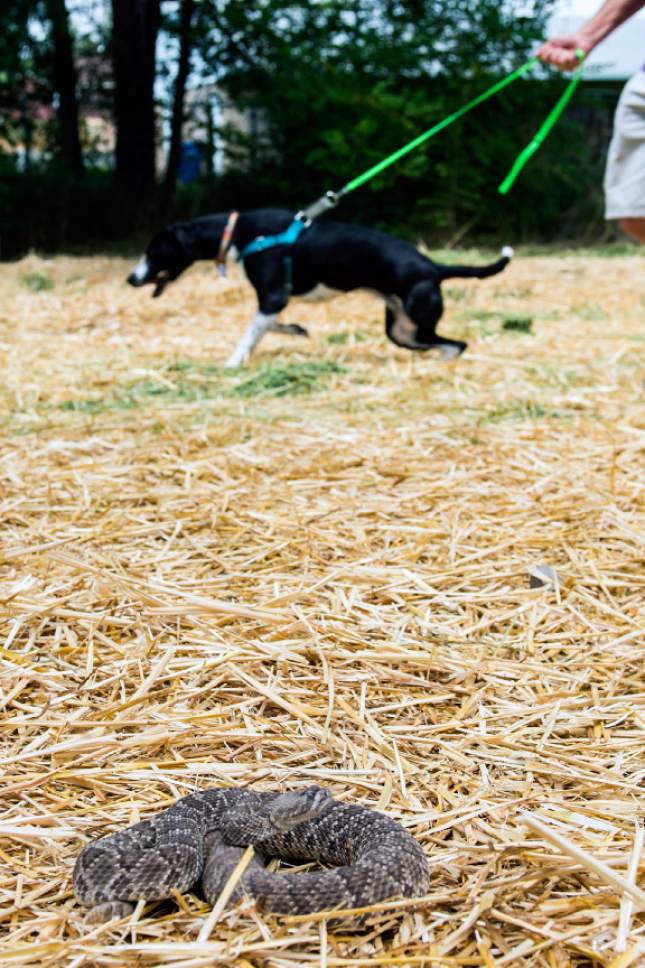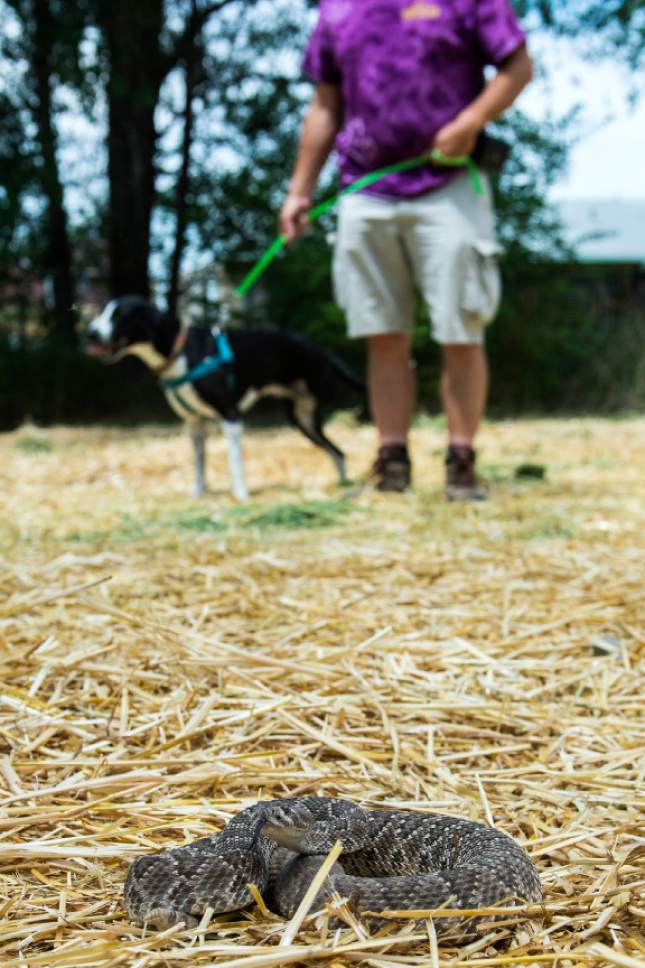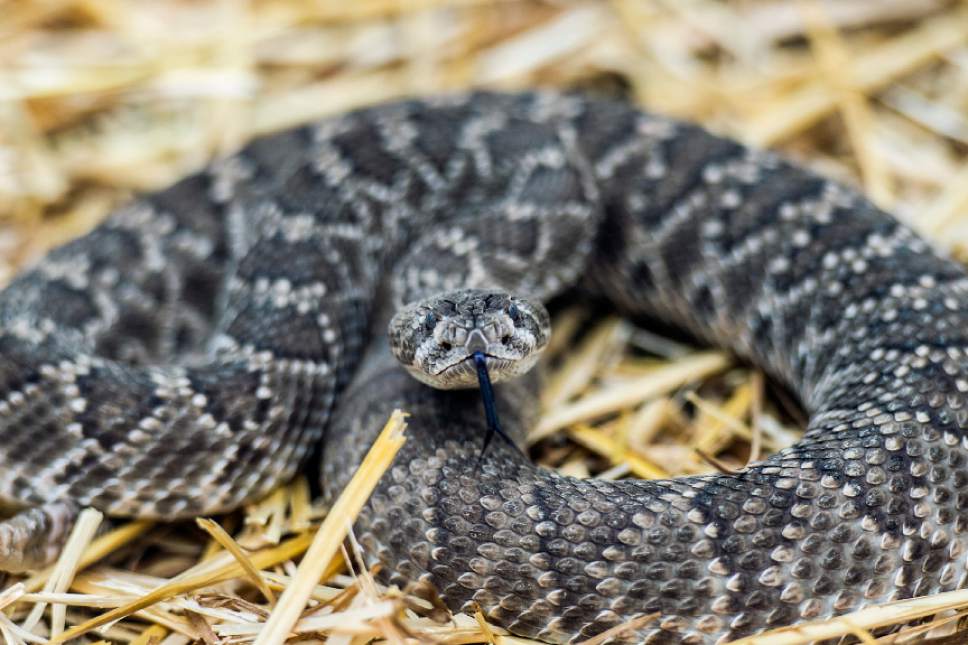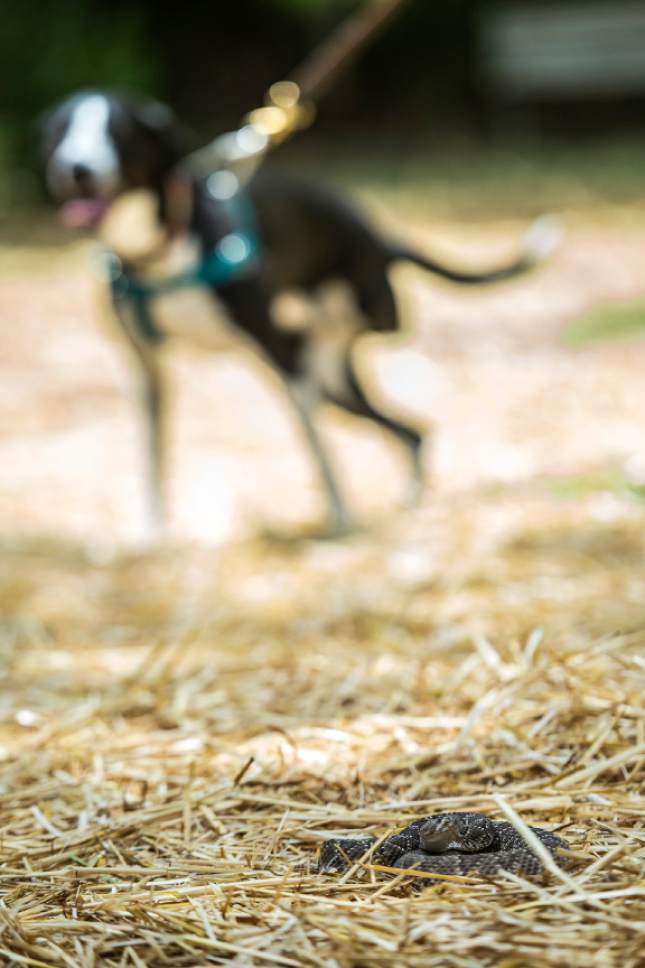This is an archived article that was published on sltrib.com in 2016, and information in the article may be outdated. It is provided only for personal research purposes and may not be reprinted.
Taylorsville • The dog locked eyes on the rattlesnake, sniffing the ground closely and curiously as it inched closer to the creature that could strike at any moment. That wouldn't happen, though. A trainer pressed a button on her remote, and the dog's shock collar activated. Suddenly, the dog yelped, jumped up in the air and refused to approach the rattlesnake again.
Two-year-old Sinatra, a Labrador and shepherd mix, had encountered his first snake just a few days earlier. His owner Katie Ekey, 22, had recently moved to Utah from Ohio, where snakes were never an issue. But out on a trail nearby Ekey's new home in Huntsville, Sinatra walked right up to a gopher snake and nearly got bitten. Ekey knew she had to get her dog trained.
She brought Sinatra to Mountain Vale Veterinary Clinic on Saturday morning, which hosted rattlesnake avoidance training in partnership with a traveling training company called Get Rattled.
"It can be life-saving training for the dog and the family — the dog can alert your family and friends to what's coming," said Sherry Whitty, owner of the vet clinic. Whitty trained her own dog Maya to avoid rattlesnakes three years ago, and since then, she's alerted Whitty whenever she sees, hears or smells a snake. "If you pay attention to your dog's behavior, you know immediately that something is wrong."
The training's three stages make use of a shock collar that startles dogs when they get too close to the snake.
The first stage is sight detection: the dog approaches the vibrating rattlesnake, getting shocked and pulled away before coming too close. Then comes scent detection: the dog sniffs a double wired cage with a rattlesnake inside before getting a collar shock. Finally, the dog approaches a gopher snake — a more docile non-venomous snake than the rattlesnake with an oftentimes painless bite — to help the dog generalize his training to other snakes.
Get Rattled trainers travel around Nevada, Arizona, Utah and other snake-infested and dog-friendly areas to help pet owners and their furry friends.
Though the pet owners themselves were afraid to walk near the buzzing rattlesnake, Get Rattled founder John Potash, a licensed reptile specialist, had no concern poking the rattlesnake to get it riled up or holding the gopher snake in his hands.
Potash started his company four years ago following three decades of training with reptiles. Now, he owns 30 different venomous rattlesnakes, some under a year old and others that have retired after two decades of training dogs. His company has branched out into toad and porcupine avoidance training, and he hopes to expand to skunk training next year.
"Our number one safety concern is actually when the dog gets startled and might lash out and bite the trainer," Potash said. "It doesn't happen often, but sometimes we've had a trainer get nipped in the hand or the leg."
The trainers suggest that owners bring their dogs back a year after the initial training to reinforce the lesson.
The steep $130 price per dog is worth it, they say, because getting bitten by a snake could cost a lot more. Because of their sense of smell and curiosity, dogs are 20 times more likely than humans to be bitten by a venomous snake and 25 times more likely to die from a bite, according to the Animal Medical Center of Southern California.
Amy Williams, 41, of Central City, brought her mix Stella to the clinic to get retrained. Stella had been trained two years earlier to avoid snakes, but recently was bitten by a gopher snake while out on a trail.
"It's better to train your dog to know what they should avoid then having to get them vaccinated afterwards," Williams said.











